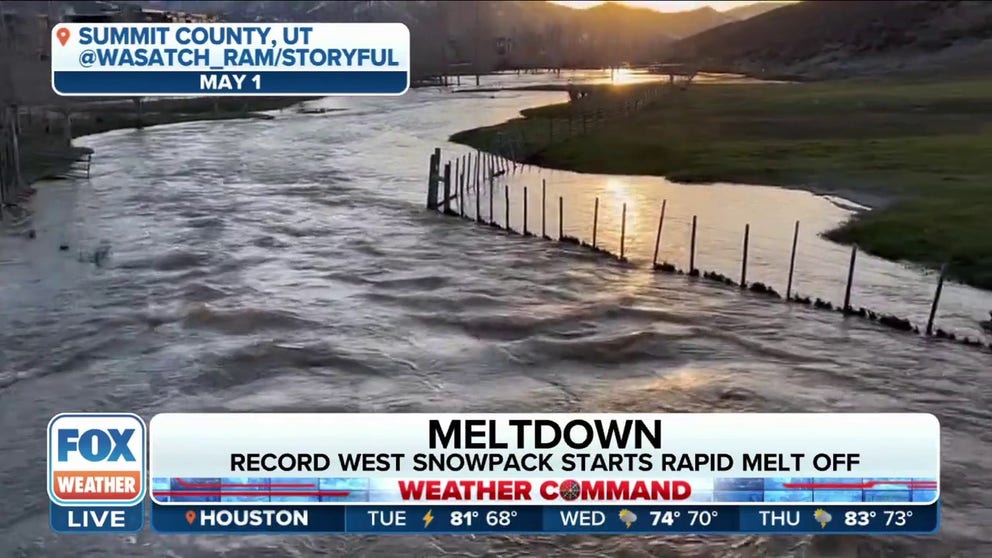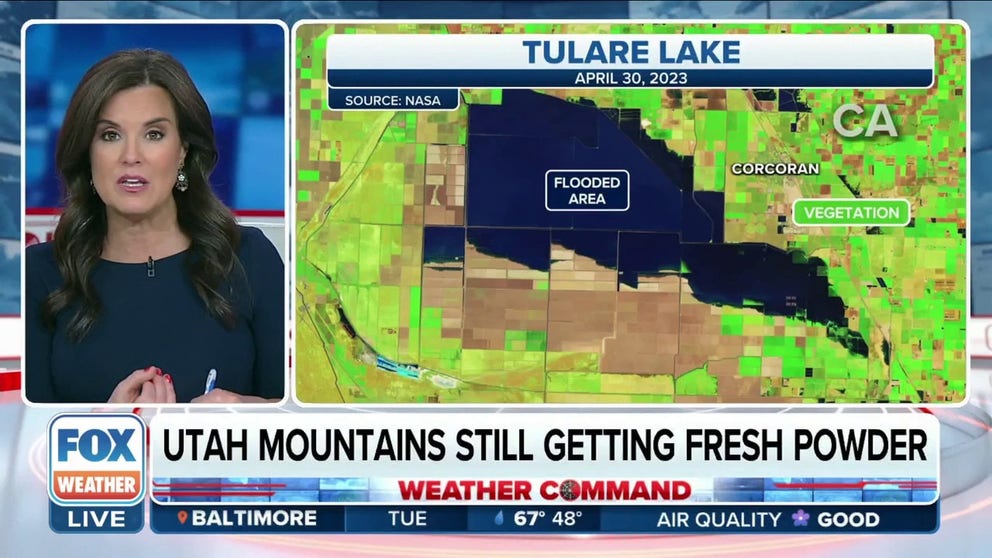‘Astronomical’ western snow is now melting but not flowing where water managers need it
Record snowfall is supposed to feed reservoirs and aquifers. But the amazing snow bonanza might be too much of a good thing and too difficult to store to ease future droughts.
'Astronomical' snowpack triggers massive snowmelt out West
Steven Fassnacht, Professor of Snow Hydrology at Colorado State University, discusses how the record snowpack out West has started a rapid melt-off.
Historic Western snow had so many who suffered through drought for years celebrating. But the snowpack, which acts as a frozen reservoir, is melting and not going exactly where water managers need it.
"This is a classic water problem. We either have too much or too little and always at the wrong time," Steven Fassnacht, professor of Snow Hydrology at Colorado State University, told FOX Weather. "For example, in California, some reservoirs are already full, and there's not a lot of places we can put this excess water."
He points to Tulare Lake in California, which is reappearing after being gone for a century.
RELENTLESS CALIFORNIA ATMOSPHERIC RIVERS DROP 32 TRILLION GALLONS OF WATER OVER 3 WEEKS
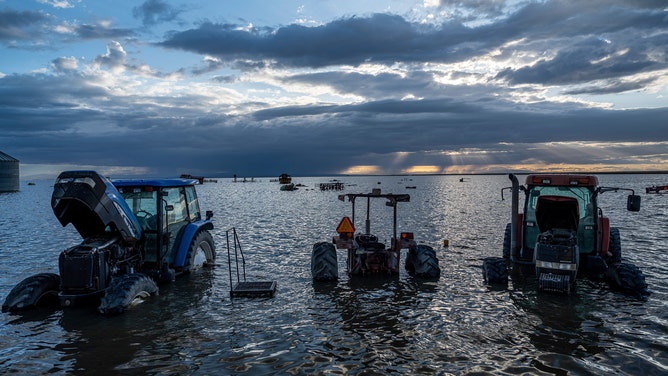
The comeback of dormant Tulare Lake after 100 years is not welcome news for farmers despite suffering through years of drought.
( David Paul Morris/Bloomberg / Getty Images)
Historic snow leads to historic flooding
About 4 million live on the land that was converted to farms and ranches in the early 1900s, according to the California Department of Water Resources. Levees and dams cut off the Southern Sierra snowpack water source for the seasonal lake, but recent snowmelt filled it again.
Massive snowmelt creates California lake, not seen in decades
What used to be Tulare Lake in central California was converted to farmland and ranches decades ago. This winter's historic snowfall and spring melt have caused this lake to reappear. NASA satellite photos show the dramatic transformation.
NASA satellite images show the area checkered with farms in March 2022. In April 2023, a huge area covering 4 counties is underwater. The area is flooding despite DWR's quarter-million sandbags and almost 20,000 super sacks to stop and redirect the water.
In recent history, the area has seen some flooding when the mountains see a lot of snow. The DWR says areas suffered significant flooding in 1969 and 1983. This past winter, the Southern Sierra hit its all-time record highest snow amount.
"This year, the Southern Sierra snowpack levels are similar to those in 1969 and have exceeded levels seen in 1983," wrote the DWR on their blog. "This means flood impacts in the Tulare Lake Basin are expected to continue now through the summer and, as the Southern Sierra snowpack melts, is expected to result in sustained high-water flows until July."
RIDICULOUS PHOTOS SHOW AFTERMATH OF 12 FEET OF SNOW IN CALIFORNIA'S SIERRA NEVADA
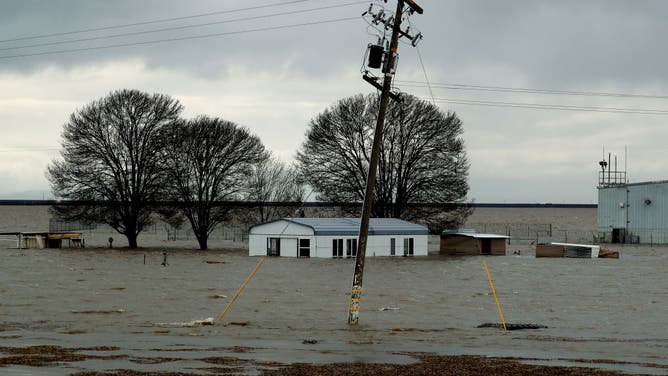
Floodwaters form Tulare Lake and inundate homes and farms.
(Luis Sinco / Los Angeles Times / Getty Images)
The snow haves and have nots
"We often look at April 1st as the big date, and those numbers were almost astronomical," Fassnacht said of the historical max height for snowpack. "You know, there were places in California where we were at 300% of the average. Places in Arizona where we're 600, 800% of average, huge amounts of snow."
But where that snowmelt goes is crucial.
"This year we just have a huge amount (of snow), and we are filling up our reservoirs where we can," Fassnacht said. "But if we look at some of the big ones like Lake Mead, Lake Powell, they're not going to be easy to fill up. We're not going to fill those up with one good snow year."
The U.S. Bureau of Reclamation calls Lake Powell a "bank account of water that is drawn upon in times of drought. Lake Powell is the second-largest reservoir in the country after Lake Mead. Both are refilled by snowmelt in the Rockies.
ROBBING LAKE MEAD OF WATER: THE EMERGENCY PLAN AIMED AT KEEPING WATER FLOWING TO THE WEST
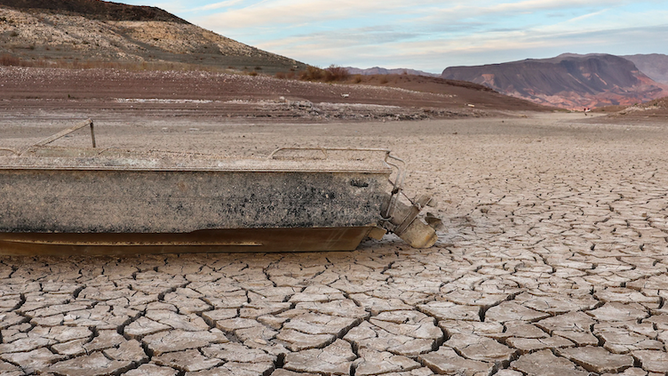
A formerly sunken boat rests on a now-dry section of lakebed at the drought-stricken Lake Mexaad on May 10, 2022 in the Lake Mead National Recreation Area, Nevada.
(Photo by RJ Sangosti/MediaNews Group/The Denver Post / Getty Images)
The Colorado River, on which the two reservoirs are built, supplies more than 40 million residents and farms in seven states and Mexico with water. It irrigates 25% of the nation’s food. The Hoover Dam supplies 15% of California’s power, according to the BOR.
"In a lot of these systems, we only have so much storage. Reservoirs are old technology," Fassnacht said. "But we only have so many of these reservoirs, and we are starting to think about other options, starting to look at groundwater recharge."
The new normal
The drought is not over, he warns. Water managers must think of more creative and innovative ways to store water. California will probably never be drought free, he suggests.
"Many of these areas in the Southwest have been in drought since the early 2000s," he said. "At the end of the day, one good year is not going to eliminate the drought because we don't know when we'll get another big snow year."
He said the climate has shifted in the Southwest, and drought is the new normal.
